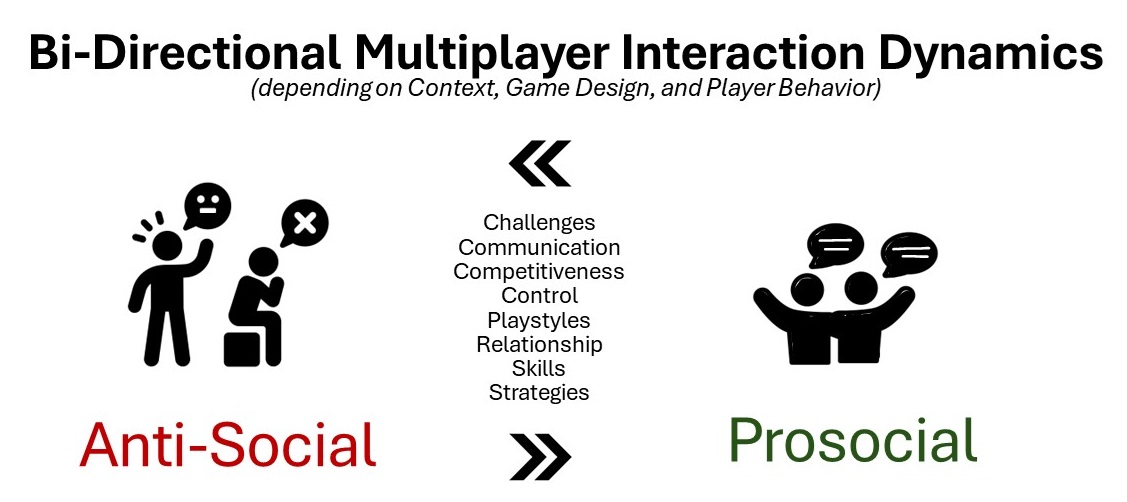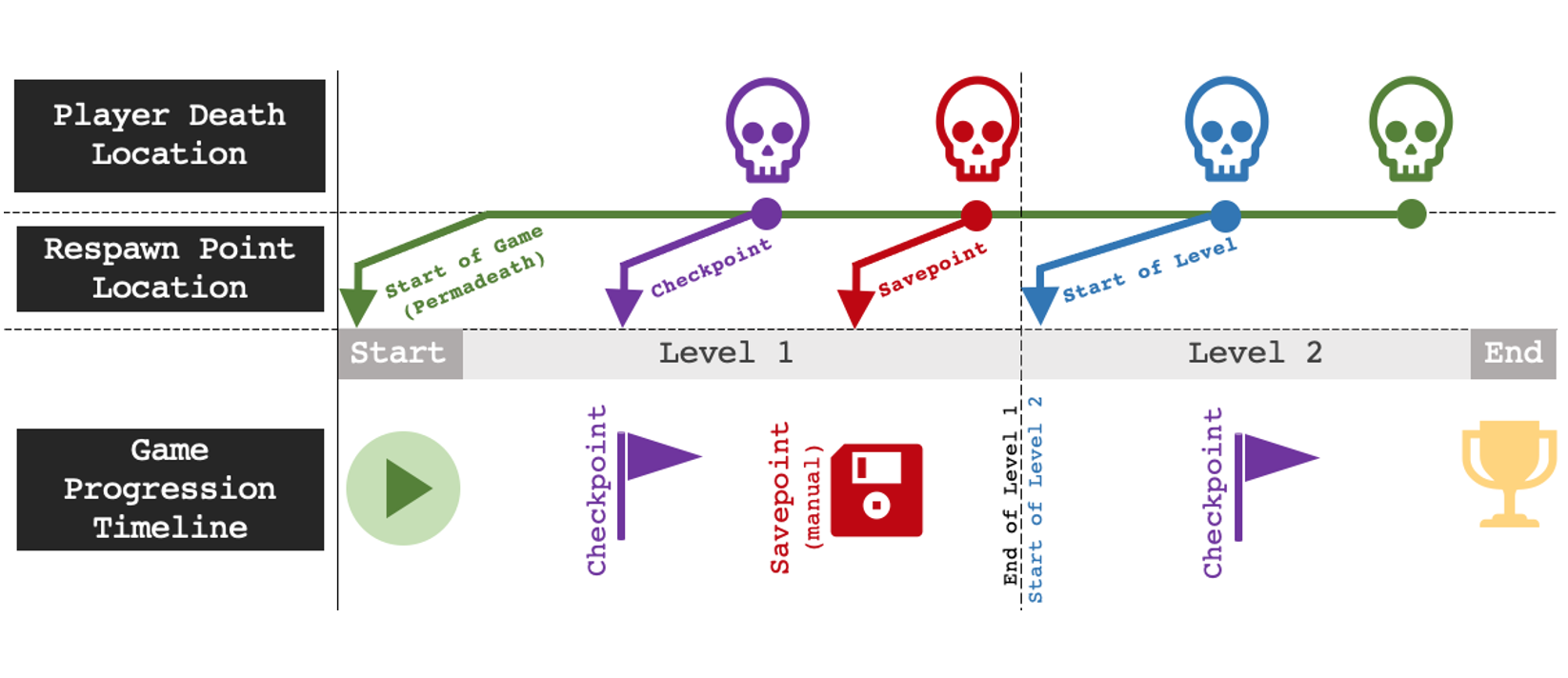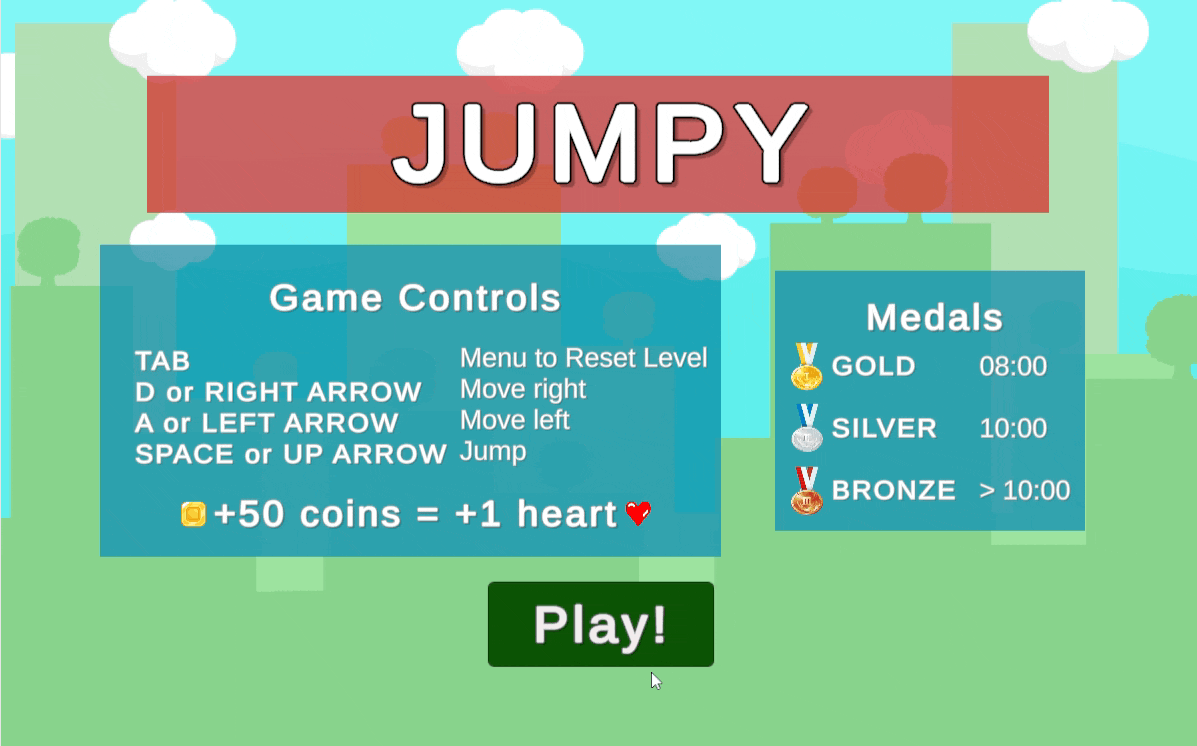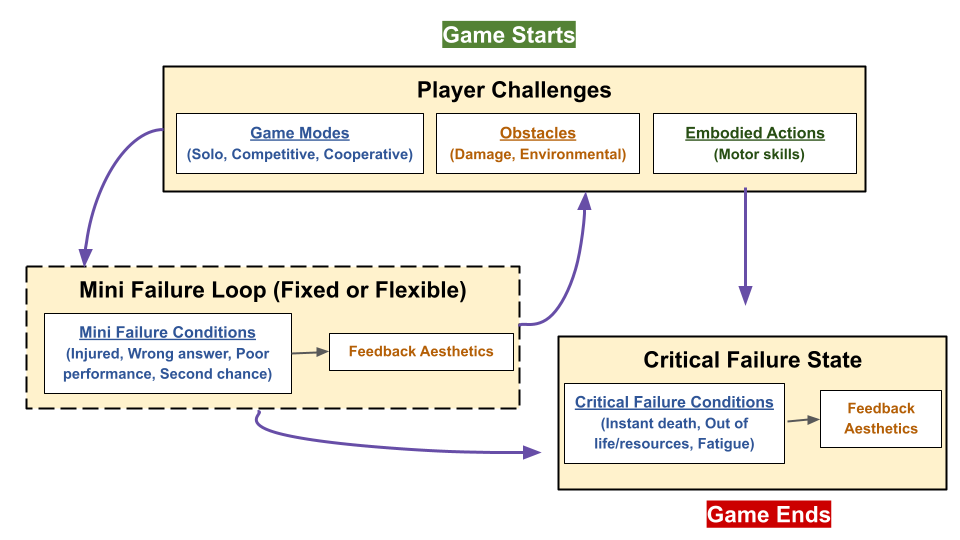-
Challenge Accepted: Explorations Toward a Player-Centric Definition of Challenge in Games (Ph.D. Dissertation)
Research Questions:
- RQ1: How do (performative) challenge components relate to failure experiences in games?
- RQ2: What (emotional) game design patterns relate to player reflection?
- RQ3: How does playing a game with others (socially) affect one’s emotional experience?
Publications
Marjorie Cuerdo. (2024). “Challenge Accepted: Explorations Toward a Player-Centric Definition of Challenge in Games." Dissertation. University of California, Santa Cruz. AbstractThe tension and drama of player challenges are what drives gameplay. While players often only think about performance when they experience difficulty and failure in games, my work argues that the scope of challenge goes beyond that aspect, including more socioemotional eudaimonic gaming experiences.
I first explored micro and macro views of challenge and failure in games from the performative challenge aspect, as well as how they related to player experience outcomes. I then explored how emotional design patterns related to eudaimonic experiences, such as player reflection. Lastly, I explored how the addition of sociality affects the emotionally challenging player experience.
Through my explorations, this dissertation provides a definition of challenge itself that aims to be more player-centric and inclusive of different types of challenge. Secondly, I contribute some future research directions and recommendations towards how to design for challenging player experiences that are emotionally-impactful and memorable.
-
Emotional Challenge in Games & Reflection
Research Questions:
- How does emotional challenge in games relate to reflection?
- What affective game design patterns are important for reflective player experiences?
Publications
Marjorie Cuerdo, Derusha Baskaran, and Edward Melcer. (2024). “Exploring how Emotional Challenge and Affective Design in Games Relates to Player Reflection". In Proceedings of the 19th Foundations of Digital Games Conference (FDG). ACM. AbstractEmotional challenge contrasts with the common perspective of challenge in games. The latter focuses on performance, while the former focuses on presenting players with heavy themes that induce complex emotions. To explore how emotional challenge impacts the player experience, we examined the relationship between player reflection and affective game design patterns—conducting a sur- vey with 53 respondents that prompted recalling an emotionally challenging situation in a video game. We then scored perceived emotional challenge ratings and coded the responses according to referenced affective game design patterns to categorize levels of reflection achieved. We found a significant difference (p < 0.011) in emotional challenge ratings and mean ranks increased across the five reflection groups, from lowest reflective level (non-reflective description) to highest (critical reflection). This demonstrates that the more emotionally challenged participants felt, the greater the depth of their reflection was. We also discovered the following design patterns to be prominently referenced in respective reflec- tion levels: emotional decision-making, identification, and nega- tive/uncomfortable feelings such as guilt.
-
(Anti)Social Challenge: Emotionally Challenging Interaction Dynamics in Multiplayer Experiences
Research Question:
- How does playing a game with others affect one's emotional experience?
- What interaction patterns arise in emotionally challenging multiplayer experiences?
Publications
Marjorie Cuerdo, Derusha Baskaran, Tsunghan Yang, and Edward Melcer. (2024). “(Anti)Social: Exploring Emotional Challenges in Multiplayer Experiences". In Proceedings of the 6th IEEE Conference on Games (CoG). IEEE. AbstractMultiplayer gaming research has most often been examined from a prosocial perspective due to its benefits in encouraging cooperative behaviors. Apart from online toxicity research, negatively-valenced dynamics are less studied. To explore these types of multiplayer experiences, we conducted an exploratory survey through the lens of what players considered "emotionally challenging" in their gaming experiences relating to the game's social, narrative, and difficulty elements. We discovered interaction patterns in recounted multiplayer experiences that we named prosocial and anti-social dynamics. We also found that it was common for multiplayer experiences to inspire reflection on one's decisions, skill level, playstyles, and relationships. We also found support for tandem play experiences. We argue that these findings reveal venues for further research into those topics to expand our knowledge on social-emotional challenges in multiplayer experiences.
-
Fail & Retry - Failure in Games & Player Experience
Research Questions:
- How is failure structured and expressed in platformer games?
- Can the Fail & Retry taxonomy be generalized to other game genres and platforms, such as embodied games in VR?
- Are there other aspects of challenge and/or failure in terms of design patterns to consider for VR?
- How do fail & retry mechanics relate to respective player experience constructs, such as mastery, challenge, autonomy, curiosity, and immersion?
- How do player orientation goal- and challenge- traits relate to the experience of failure in games?
Methods:
- 1. Observations
- 2. Qualitative Coding: Open, Axial, and Selective
- 3. Surveys, Quantitative Analysis
- 4. Game Design and Development
Publications
Marjorie Cuerdo, Anika Mahajan, Josh Mao, and Edward Melcer. (2023). “Try Again?: A Macro-Taxonomy of the Challenge and Failure Process in Games". In 2023 IEEE Conference on Games (CoG). IEEE.Marjorie Cuerdo. (2022). Fail and Retry: How Challenge Design in Platformer Games Relates to Player Experience and Traits" Master of Science Thesis. UC Santa Cruz.
Marjorie Cuerdo, Anika Mahajan, and Edward Melcer. (2021). “Die-r Consequences: Player Experience and the Design of Failure through Respawning Mechanics". In 2021 IEEE Conference on Games (CoG). IEEE.Marjorie Cuerdo and Edward Melcer. (2020). “’I’ll Be Back’: A Taxonomy of Death and Rebirth in Platformer Video Games”. In Extended Abstracts of the 2020 CHI Conference on Human Factors in Computing Systems. CHI '20, Honolulu, HI, USA. ACM.
Edward F. Melcer and Marjorie Cuerdo. (2020). “Death & Rebirth in Platformer Games”. In Game User Experience and Player-Centered Design. Springer.
DescriptionFailure is a central aspect of almost every game, driving player perceptions of difficulty and impacting core aspects of game user experience. At the heart of failure in many game genres is player death, and platformer games in particular rely heavily on the use of death within their design. This work addresses the rich, underexplored space of in-game death/failure (and respawning) through the creation of a generalized taxonomy of failure in platformer games. The taxonomy consists of five notable dimensions of a cyclical nature: (1) obstacles, (2) failure/death conditions, (3) aesthetics, (4) player progress, and (5) reset/respawn locations. These different dimensions have a number of potential implications for key aspects of player experience and design. The taxonomy could also be used to help improve the effectiveness of related engagement techniques such as dynamic difficulty adjustment.
In addition to the original taxonomy, we developed the "Taxonomy of Challenge and Failure" to be extensible to other game genres and platforms. We observed various game genres in VR to find that there are three main components of challenge and failure: (1) player challenges, (2) mini failures, and (3) critical failures.
As for an experimental study, we explored how altering the consequences of death on player progress affected aspects of the player experience. Specifically, our research investigated the relationship of failure mechanics – the location of reset/respawn points – to player experience (PX) constructs, such as mastery, challenge, autonomy, curiosity, and immersion. We developed a simple 2D platformer game that only differed in reset point locations: the start of the game (permadeath), the start of a level, the last reached checkpoint, and the last manually saved point.
.png)



